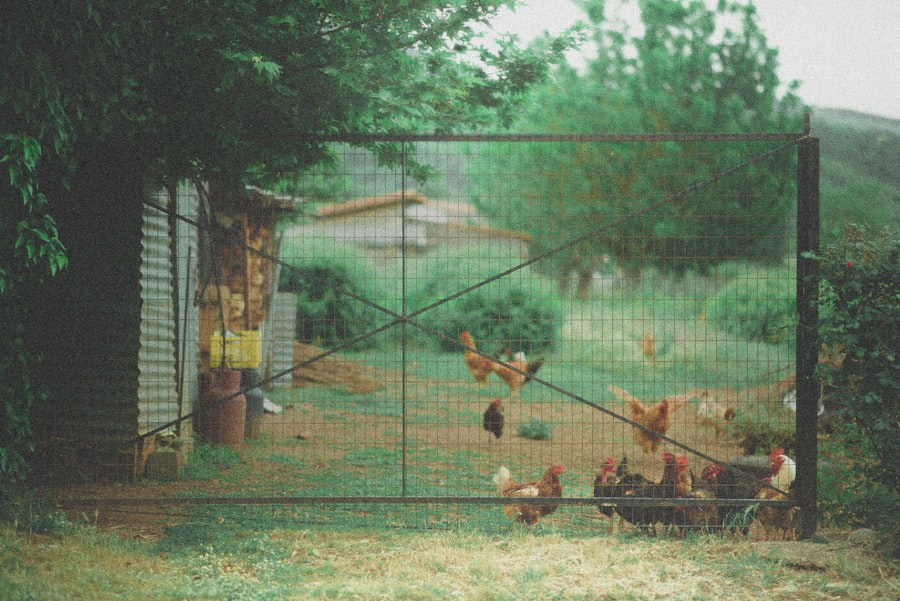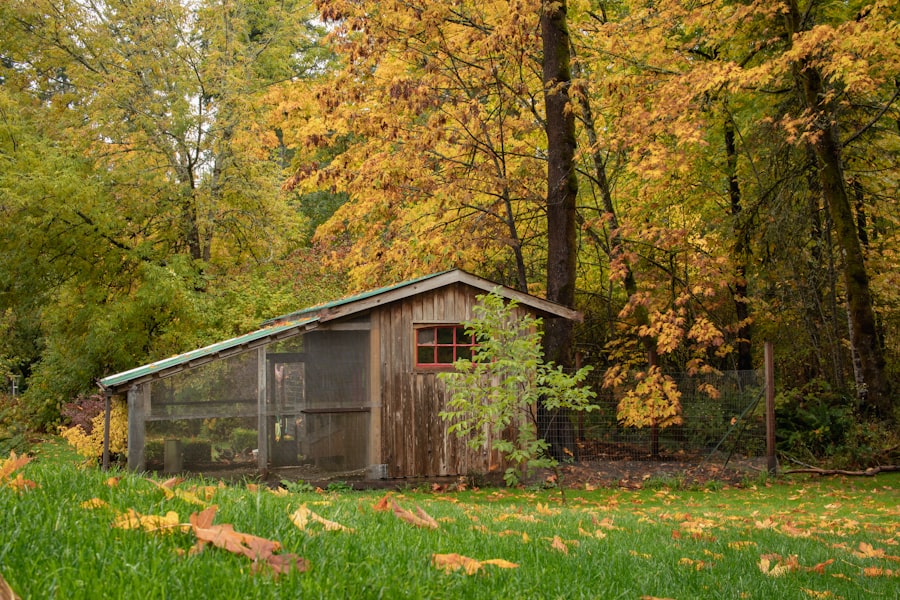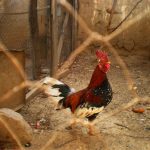Foxes are common predators that threaten chickens. These intelligent and agile animals can easily infiltrate chicken coops and capture birds. Foxes pose a significant danger to chickens due to their superior hunting skills and ability to outmaneuver them.
Their adaptability to various environments further enhances their threat to chicken populations. As opportunistic hunters, foxes often target small animals like chickens for sustenance. Their digging and climbing abilities enable them to access chicken enclosures with relative ease.
Foxes’ stealthy nature makes it challenging for chickens to detect their presence until it is too late. Chicken owners must recognize the threat foxes present and implement preventive measures to safeguard their flocks. The impact of foxes on chickens extends beyond physical harm.
The presence of foxes in the vicinity can induce stress and anxiety among chickens, negatively affecting their overall well-being. Chicken owners should be aware of the potential risks posed by foxes and take appropriate steps to secure their coops and protect their flocks from harm.
Table of Contents
- 1 Securing the Coop: Tips for Fortifying the Chicken Enclosure
- 2 Nighttime Safety Measures: Protecting Chickens During Sleep
- 3 Predators Deterrents: Using Scents and Sounds to Keep Foxes Away
- 4 Supervised Free Range Time: Allowing Chickens to Roam Safely
- 5 Neighboring Wildlife: Understanding the Impact on Chicken Safety
- 6 Emergency Response Plan: What to Do If a Fox Threatens Your Flock
- 7 FAQs
Key Takeaways
- Foxes pose a significant threat to chickens, as they are natural predators and can easily access chicken coops.
- Fortifying the chicken enclosure with sturdy fencing and secure latches is essential for keeping foxes out.
- Implementing nighttime safety measures such as locking chickens in a secure coop and using motion-activated lights can help protect them from fox attacks.
- Using scents and sounds such as predator urine and loud noises can deter foxes from approaching the chicken coop.
- Allowing chickens to roam in a supervised free range environment can provide them with exercise while keeping them safe from foxes.
Securing the Coop: Tips for Fortifying the Chicken Enclosure
Building a Secure Coop
One of the first steps is to ensure that the coop is constructed with sturdy materials that are difficult for predators to break through. This may include using heavy-duty wire mesh, reinforced doors, and secure latches to prevent foxes from gaining entry.
Securing the Surrounding Area
In addition to the physical structure of the coop, it’s important to consider the surrounding area and make it as unappealing as possible to potential predators. This may include removing any brush or debris that could provide cover for foxes, as well as installing motion-activated lights or alarms to deter them from approaching the coop.
Maintenance and Ongoing Protection
It’s also important to regularly inspect the perimeter of the enclosure for any signs of digging or other attempts by predators to gain access. Another important aspect of securing the coop is to ensure that it is properly maintained and free from any potential entry points for foxes. This may include repairing any damaged areas of the enclosure, such as holes in the wire mesh or gaps in the fencing. It’s also important to keep the area around the coop clean and free from food scraps or other attractants that could draw in foxes. By taking these proactive measures, chicken owners can help to fortify their coop and protect their flock from potential predators.
Nighttime Safety Measures: Protecting Chickens During Sleep

Nighttime is a particularly vulnerable time for chickens, as they are at risk of being targeted by predators such as foxes while they are roosting in their coop. It’s important for chicken owners to take proactive measures to protect their flock during this time, including ensuring that the coop is secure and that the chickens have a safe place to roost. One important step is to make sure that the coop is securely locked at night, with reinforced doors and latches that are difficult for predators to manipulate.
In addition to securing the coop, it’s important to provide a safe roosting area for the chickens inside the enclosure. This may include installing roosting bars or platforms that are elevated off the ground and away from potential entry points for predators. It’s also important to provide adequate bedding material on the roosting bars to keep the chickens comfortable and secure during the night.
Another important nighttime safety measure is to consider adding additional security features such as motion-activated lights or alarms around the coop. These can help to deter predators such as foxes from approaching the enclosure during the night, giving the chickens an added layer of protection while they sleep. By taking these proactive measures, chicken owners can help to ensure that their flock is safe and secure during the vulnerable nighttime hours.
Predators Deterrents: Using Scents and Sounds to Keep Foxes Away
In addition to physical barriers, there are also natural deterrents that can be used to keep foxes away from chicken coops. One effective method is to use scents that are unappealing to foxes, such as predator urine or other natural repellents. These scents can be strategically placed around the perimeter of the coop to create a barrier that deters foxes from approaching.
Additionally, some chicken owners have found success in using sound deterrents, such as motion-activated alarms or even playing recordings of predator calls, to keep foxes at bay. Another natural deterrent that can be effective in keeping foxes away from chicken coops is the presence of guardian animals such as dogs or even llamas. These animals can help to protect the flock by patrolling the area around the coop and deterring potential predators from approaching.
Their presence alone can be enough to keep foxes at a distance, providing an added layer of protection for the chickens. It’s important for chicken owners to consider using a combination of physical barriers and natural deterrents to keep foxes away from their flock. By taking a multi-faceted approach, they can create a more secure environment for their chickens and reduce the risk of predation by foxes.
Supervised Free Range Time: Allowing Chickens to Roam Safely
While it’s important to take measures to secure the chicken coop, many chicken owners also enjoy allowing their flock some free range time outside of the enclosure. This can provide numerous benefits for the chickens, including access to fresh grass and insects, as well as opportunities for exercise and mental stimulation. However, it’s important for chicken owners to supervise free range time to ensure that their flock remains safe from potential predators such as foxes.
One way to allow chickens to roam safely is by using temporary fencing or electric netting to create a secure area for them to explore. This can help to keep them contained while still allowing them access to fresh forage and exercise. It’s also important for chicken owners to supervise free range time and keep a close eye on their flock for any signs of potential danger, such as the presence of foxes or other predators in the area.
Another important consideration when allowing chickens to roam freely is the time of day. It’s generally safest to allow free range time during daylight hours when predators such as foxes are less active. By taking these proactive measures, chicken owners can provide their flock with opportunities for free range time while still ensuring their safety from potential predators.
Neighboring Wildlife: Understanding the Impact on Chicken Safety

Identifying Common Predators
This may include identifying common predators in the area, such as raccoons, hawks, or coyotes, and taking steps to secure the coop and protect the flock from harm.
Understanding Wildlife Behavior Patterns
One important aspect of understanding neighboring wildlife is recognizing their behavior patterns and identifying potential risks to the flock. For example, some predators may be more active at certain times of day or during specific seasons, which can help chicken owners anticipate potential threats and take proactive measures to protect their flock.
Mitigating Attractants and Risks
It’s also important for chicken owners to consider how neighboring wildlife may be attracted to their property and take steps to mitigate these risks. This may include securing food sources such as garbage cans or compost piles, as well as removing any potential attractants that could draw in predators. By understanding the impact of neighboring wildlife on chicken safety, owners can take proactive measures to protect their flock from potential threats.
Emergency Response Plan: What to Do If a Fox Threatens Your Flock
Despite taking proactive measures to secure the coop and protect their flock, there may still be instances where a fox poses a threat to chickens. In these situations, it’s important for chicken owners to have an emergency response plan in place to quickly address the situation and protect their flock from harm. One important step is to have a plan in place for quickly securing the chickens in a safe area if a fox is spotted in the vicinity.
In addition to having a plan for securing the flock, it’s also important for chicken owners to have a strategy for deterring or removing the fox from the area. This may include using deterrents such as loud noises or water sprays to scare off the fox, as well as contacting local wildlife authorities for assistance if necessary. It’s also important for chicken owners to remain vigilant and regularly inspect the perimeter of the coop for any signs of potential threats from foxes or other predators.
Another important aspect of an emergency response plan is having a strategy for assessing any potential damage or injuries to the flock and providing immediate care if necessary. This may include conducting a thorough inspection of the chickens for any signs of injury or distress, as well as providing first aid or veterinary care as needed. By having an emergency response plan in place, chicken owners can quickly address potential threats from foxes and protect their flock from harm.
In conclusion, foxes pose a significant threat to chickens and it’s important for chicken owners to understand this threat and take proactive measures to protect their flock. By securing the coop, implementing nighttime safety measures, using natural deterrents, supervising free range time, understanding neighboring wildlife, and having an emergency response plan in place, owners can help ensure the safety and well-being of their chickens in the face of potential threats from foxes and other predators.
If you’re looking for ways to keep your chickens safe from foxes, you might want to check out this article on The Chicken Coop Country Diner. It offers tips on how to design your chicken coop to keep predators like foxes at bay.
FAQs
What are the main threats to chickens from foxes?
Foxes are known to be a common predator of chickens. They are skilled at digging and climbing, making it easy for them to access chicken coops and runs. Foxes are also known to be persistent and can pose a significant threat to the safety of chickens.
How can I protect my chickens from foxes?
There are several measures you can take to protect your chickens from foxes. These include securing the coop and run with sturdy fencing, using hardware cloth to prevent digging, installing motion-activated lights or alarms, and using guard animals such as dogs or llamas to deter foxes.
What should I do if I suspect a fox is targeting my chickens?
If you suspect that a fox is targeting your chickens, it is important to take immediate action to protect your flock. This may include reinforcing the coop and run, setting up traps, or contacting local wildlife authorities for assistance.
Are there any natural deterrents for foxes?
Some natural deterrents for foxes include using strong-smelling substances such as predator urine or citrus peels around the coop, as well as planting thorny bushes or installing prickly strips to discourage foxes from approaching.
What are some signs that a fox has been targeting my chickens?
Signs that a fox has been targeting your chickens may include missing or injured birds, feathers scattered around the coop or run, and evidence of digging or attempts to access the coop. It is important to regularly inspect the coop and run for any signs of fox activity.
Meet Walter, the feathered-friend fanatic of Florida! Nestled in the sunshine state, Walter struts through life with his feathered companions, clucking his way to happiness. With a coop that’s fancier than a five-star hotel, he’s the Don Juan of the chicken world. When he’s not teaching his hens to do the cha-cha, you’ll find him in a heated debate with his prized rooster, Sir Clucks-a-Lot. Walter’s poultry passion is no yolk; he’s the sunny-side-up guy you never knew you needed in your flock of friends!







